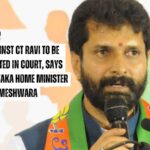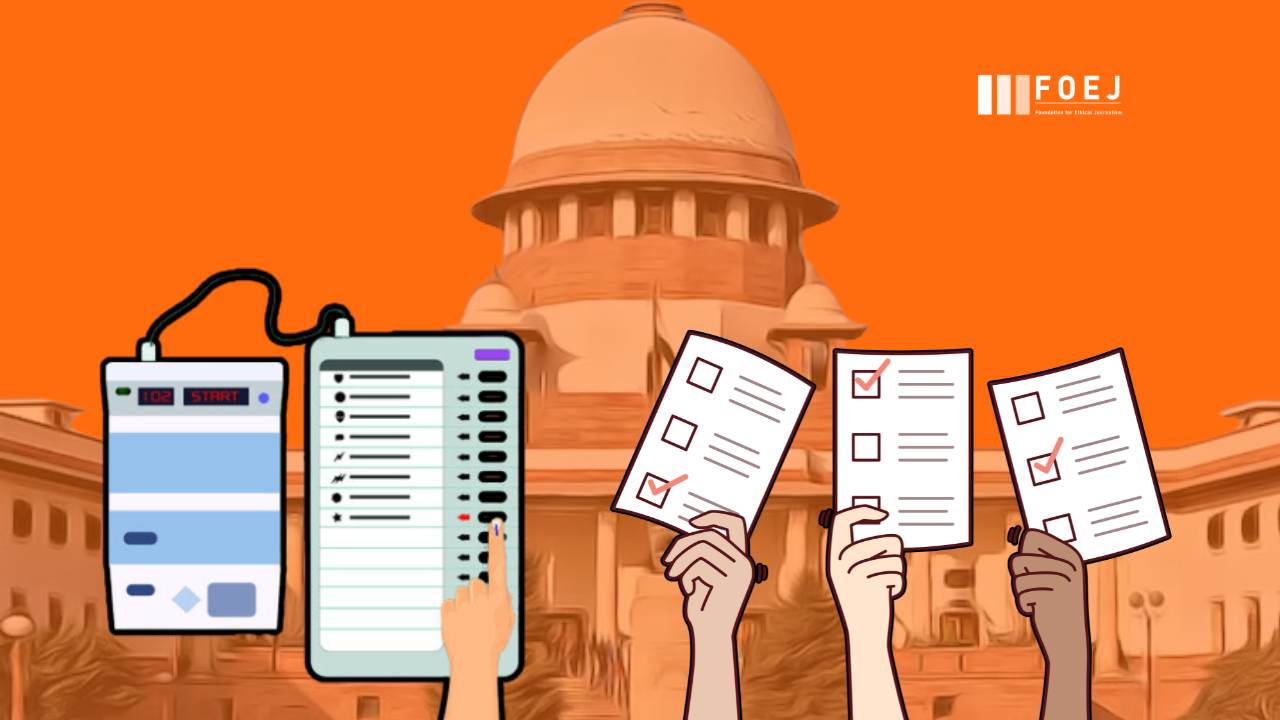Rejecting the idea of voting through ballot papers, the Supreme Court on Tuesday questioned petitioners who sought cross-verification of the votes cast with electronic voting machines (EVMs).
An NGO, the Association for Democratic Reforms, had filed a petition, and advocate Prashant Bhushan was the counsel of the petitioner. The counsel sought 100% verification of EVM votes with VVPAT slips and thus made three suggestions:
- Go back to the paper ballot system, or
2. The voters must be allowed to take and deposit VVPAT slips physically in the ballot box and count the slips.
3. Replace the opaque glass of the machine with a transparent one, and count all the VVPAT slips. Bushman said that the voter can see the displayed slip only for 7 seconds when the light bulb turns on inside. “Due to the opaque glass, even the VVPAT can be manipulated. Let the voter take the slip and put it in the ballot box. The only way to be sure is to let the voter verify the slip. Being a small slip, the counting will be done in well less than a day. In the election, they are taking 6 weeks; one more day makes no difference,” he submitted.
Addressing the petitioners, Justice Khanna said: “Normally, human intervention is going to create problems. Then questions regarding human weaknesses, including bias, will arise. Machines will normally, without any human intervention, work properly and give accurate results. Yes, problems arise when there is human intervention to make manipulations or unauthorized changes. That premise, if you want to argue on that, do.”.
At another juncture during the hearing, Justice Khanna said, “When you do hand counting, there will be different numbers counting.”.
Taking the example of European countries like Germany before the Court, Advocate Prashant Bhushan argued that they had gone back to the paper ballot system. In response, Justice Khanna said, “We are in our 60s. We have seen what used to happen earlier. Have you forgotten that? If you have forgotten that, I am sorry; I have not forgotten.”
Justice Datta said the conduct of elections in India is “a humongous task. It is not possible for any European country to conduct. My home state, West Bengal, has a larger population than Germany. We need to repose some trust and faith in somebody. It’s a very small state. We have to repose some trust and confidence in somebody. Of course, they are accountable. But don’t try to bring down the system like this.” Meanwhile, Justice Khanna noted, “There are 97 crore total registered voters. We all know what happened when there were ballot papers.”
Bhushan wondered if it was booth capture that the judge was referring to.
To this, Justice Khanna said, “Forget about booth capturing. What happens when ballot papers are… anyway? Let’s not enter into a debate.”
Bhushan had brought up the idea of ballot papers when the bench, also comprising Justice Dipankar Datta, asked him what alternative he had in mind to the EVMs.
The bench asked a series of questions regarding the workings and process of counting votes by the EVM. Earlier, ADR had suggested that “the majority of voters don’t trust EVMs.” Bhushan was asked, “Where do you get that?” to which he replied, “CSDS-Lokniti poll.”
“Poll! … Let’s not believe in these private polls,” Justice Datta reacted.
Justice Khanna said, “This type of argument may not be acceptable because there is no data with regard to that. A private poll will not be able to… It’s possible somebody else will take out a poll to the contrary. Let’s not go into all that.”
EVM’s Manipulation
EVMs and voter verifiable paper audit trail machines (VVPATs) are designed and manufactured indigenously by Bharat Electronic Limited (BEL), a PSU under the Defense Ministry, and the Electronic Corporation of India Limited (ECIL), another PSU under the Department of Atomic Energy. Bhushan said that these companies have many BJP office-bearers as directors.
The bench said, “As far as when we have to examine whether the EVMs are functioning properly, we will have to go by the data. With regard to the total number of votes polled in a particular year-on-year together and whether they have tallied it with the total number of votes counted later on, in how many cases there were discrepancies? In how many cases, ultimately, the candidate’s request for counting of the paper slips was done, and how many discrepancies were found in that? That will give us the true picture of whether the EVMs are being manipulated or whether there are chances of manipulation or not. That data they will provide. We will ask them for that data.”
Bhushan said, “We are not saying that EVMs are being manipulated or have been manipulated. What we are saying is that EVMs can be manipulated because both the EVM and the VVPAT have a programmable chip.”
Senior Advocate Gopal Sankaranarayanan cited a news report about ECI data regarding the 2019 Lok Sabha Polls, where the number of votes counted in some constituencies mismatched the number of votes cast on EVMs. He said there were “serious discrepancies… in 373 constituencies that went to the polls in the first phase of the election.”.
“If there is any such discrepancy, each candidate will be given that data, and the candidates would have immediately challenged it,” Justice Khanna said, mentioning that the button might not have been immediately pressed by the voter.
Referring to a July 2023 report of the Committee on Government Assurances, Sankaranarayanan also said that in July 2023, “a Parliamentary panel has said that the Union government is yet to provide a reply for the last four years after it promised Parliament that it would obtain information from the Election Commission about possible discrepancies between the EVMs and VVPAT rally during the 2019 elections.”.
The bench said it would ask the ECI about this.









